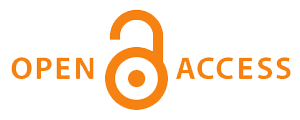Forecasting the consumption of table eggs in Iraq for the period 2024-2034 using the Box-Jengis methodology
DOI:
https://doi.org/10.34093/2wdm2b44Keywords:
Demand forecasting, Table eggs, Box-Jenkins methodology, AIC criterionAbstract
This study addressed the problem of the lack of accurate estimates of the demand for table eggs in Iraq, which leads to an imbalance between supply and demand. Accordingly, estimating the individual demand function helps to know the extent to which the change in consumer income affects his demand for eggs, as well as the impact of the increase in population and the noticeable increase in health awareness, in addition to fluctuations in local production. The time series data for the quantities consumed in Iraq during the period 2003-2023 indicate an increase in the demand for table eggs in Iraq from 2006 to 2019, after which the decline in the series began noticeably starting in 2020 due to the Corona pandemic. Accordingly, this study highlighted the importance of table eggs in achieving food security as an important source of animal protein and a cheaper alternative to any animal protein source. The Box-Jengis methodology was used to predict the required quantities of table eggs, as the value of the AIC criterion reached about 104, which is a criterion that indicates whether the model is efficient or not, and therefore its value indicates the efficiency of the model. Accordingly, the ARIMA model was used to provide accurate estimates of the expected quantities of table eggs consumed for the period from 2024 to 2034, as the forecast results indicate a slight increase in demand for table eggs during the forecast period. The study came out with recommendations for the agricultural planner, the most important of which is the importance of supporting the producer to increase local production by imposing large taxes on imported eggs to reduce the imported quantities of table eggs, and also working to provide practical solutions to solve the problems facing the local market for this commodity.
Downloads
Published
Issue
Section
License
The copyright is transferred to the journal when the researcher is notified of the acceptance of his research submitted for publication in the journal.


